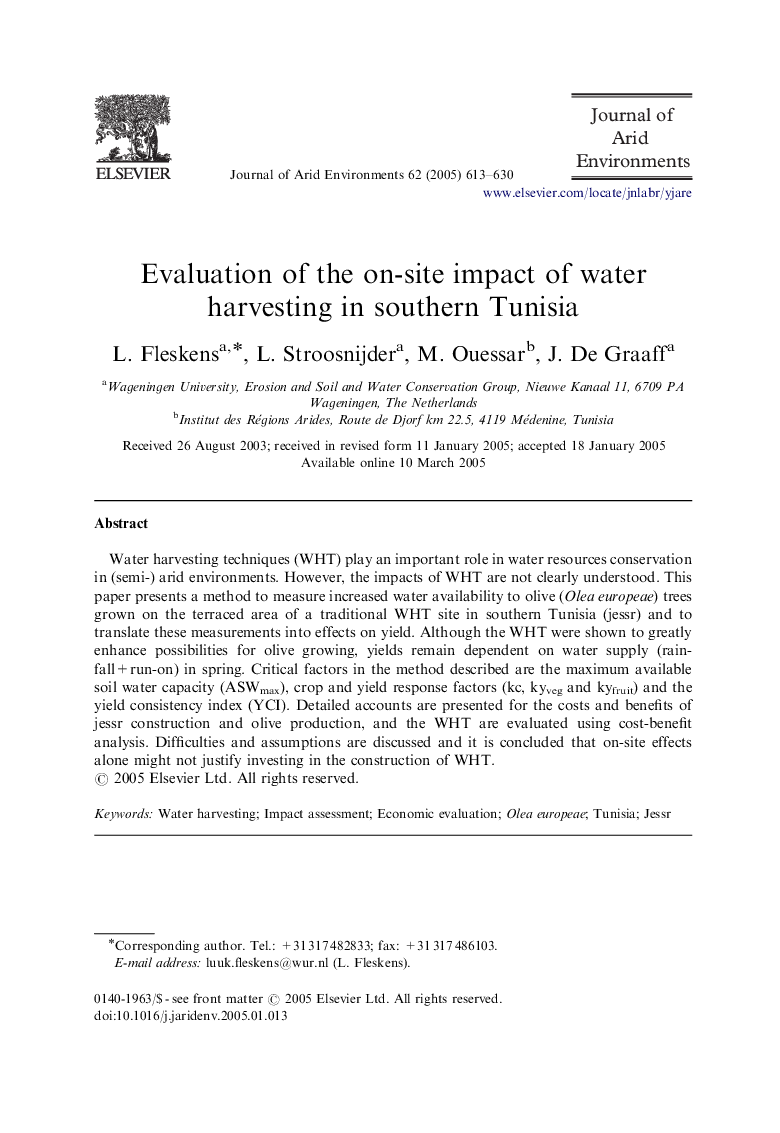| Article ID | Journal | Published Year | Pages | File Type |
|---|---|---|---|---|
| 9447897 | Journal of Arid Environments | 2005 | 18 Pages |
Abstract
Water harvesting techniques (WHT) play an important role in water resources conservation in (semi-) arid environments. However, the impacts of WHT are not clearly understood. This paper presents a method to measure increased water availability to olive (Olea europeae) trees grown on the terraced area of a traditional WHT site in southern Tunisia (jessr) and to translate these measurements into effects on yield. Although the WHT were shown to greatly enhance possibilities for olive growing, yields remain dependent on water supply (rainfall+run-on) in spring. Critical factors in the method described are the maximum available soil water capacity (ASWmax), crop and yield response factors (kc, kyveg and kyfruit) and the yield consistency index (YCI). Detailed accounts are presented for the costs and benefits of jessr construction and olive production, and the WHT are evaluated using cost-benefit analysis. Difficulties and assumptions are discussed and it is concluded that on-site effects alone might not justify investing in the construction of WHT.
Related Topics
Physical Sciences and Engineering
Earth and Planetary Sciences
Earth-Surface Processes
Authors
L. Fleskens, L. Stroosnijder, M. Ouessar, J. De Graaff,
